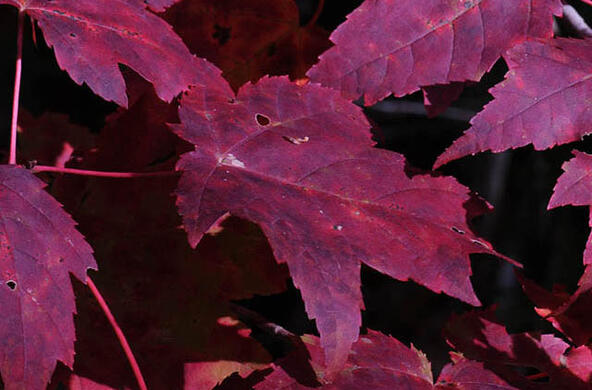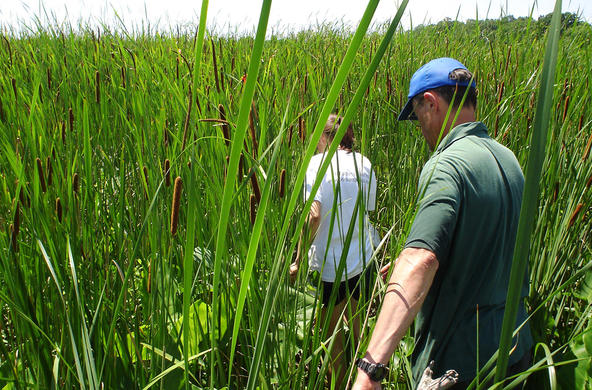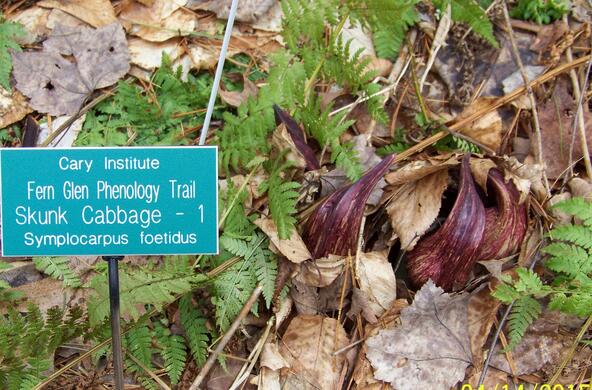Objectives
Students collect data about the "seed rain" in the their schoolyard, while also learning to identify trees and seeds in their schoolyard. This data can be collected over months or year to analyze and compare data on seed production over time.
Overview
Rating:
Students identify trees in the schoolyard and then build seed baskets to capture falling seeds. The seeds are then identified and data is collected to describe seed production in the schoolyard over time. Finally, students can use the seeds to determine seed preference of resident seed eaters!
Materials
Seed basket:
- Mesh screening
- Hula hoop
- 4 5 foot long stakes (green plastic “durastakes” work well)
- Several 7” cable ties
- Fishing line
- Size 7 swivels (used for fishing)
Data collection:
- Paper lunch bags or large ziploc bags
- Data sheet (see appendix)
- Printed pictures of the following seeds: Red oak, White oak, Chestnut oak, Black oak, Pignut hickory, Tulip poplar), Red maple, Sugar maple, Tree-of-heaven, and White ash. (see appendix)
- The following website http://plants.usda.gov as well as any tree field guide is helpful for identification of trees
Materials for seed preference extension
- Coffee stirrers (one per seed)
- Colored markers
- Non-latex gloves
- 6 types of seeds (from seed basket or gathered from forest floor)
- Measuring tape
- Rope or string out a .5m2 plot
- Materials for track plates (see protocol)
- Materials for seed preference extension· Materials for track plates (see protocol)
Procedure
Engage – Seed Hunt
Give each student a bag or container and ask them to head out into the schoolyard and look for as many seeds as they can in 10 minutes. Back in the classroom ask them to sort the seeds and then review how seeds are similar and different. Generate discussion on what would eat (if anything) the different seeds.
Generate a food web based on the seeds they found and what they think eats those seeds.
Explore
Tell the students that they will be collecting data about how many seeds the trees in the schoolyard make. This is important because trees, especially oak trees, can produce different amounts of seeds (acorns) each year. Some years they produce LOTS of seeds, we call this a mast year. Other years they produce less seeds. Look at the food web that was generated and ask the students what would happen to the animals that eat seeds during a mast year and during a non mast year.
Explain
For some mammals, acorns are a critical food source. In years with many acorns (a mast year) small mammals have better chances to survive the winter and reproduce the following year. Years of low acorn densities will often cause a small mammal population crash during the winter. See the graph below for a visual of this relationship.
The black-legged tick population depends on small mammals (especially white-footed mice) as their host during their larval and nymphal stages. The bacteria that causes Lyme disease, Borrelia burgdorferii, is transferred back and forth from the small mammals to the ticks and back again. When the small mammal population crashes, black-legged ticks have little opportunity to find a suitable host the following year, while a high small population leads to a greater the density of infected ticks after a one-year lag. There is a two-year lag between the state of the mast crop and its chain-reaction-like effect on Lyme disease risk for humans.

Elaborate- Seed rain in your schoolyard
1. Choose locations
The number of seed baskets you can make will be in function of the students’ ability to identify seeds, the trees in the schoolyard and amount of materials available. If the class can set up at least 2 seeds baskets, it would allow them to the compare the data from 2 trees, making the numbers more meaningful.
2. Build the seed baskets
- Cut a 5 x 5 foot square piece of screen, fold it into quarters, trim one edge and unfold so that you have a 5 foot diameter circle
- Place over the hula hoop and secure with cable ties
- Place the seed basket on the ground in the desired location.
- Hammer the 4 stakes in a square around the basket
- Tightly tie the fishing line to the stakes.
- Attach the swivels to the cable ties and connect the basket to the fishing line. The basket should be suspended several inches from each stake and about 3.5 feet from the ground.
- Now that the seed basket is built, flag or mark it so that each basket has a “name”. This will aid in data collection later. If you only do one seed trap, this step is not necessary.
3. Collect seeds every 2-4 weeks. Try not to collect when the traps are wet, as smaller seeds and winged seeds will stick to the mesh. Remove all leaves and large debris from the trap, collect the seeds and identify. Do not count acorn caps, those that have insect holes in them, or those that have been already predated by mammals. At the Cary Institute, we find red maple seeds between April and July, while production of acorns, hickory nuts, sugar maple seeds, and ash seeds should occur between August and December. The smallest seeds, such as those of birch trees, are not counted because they are not suitable food for small mammals.

Seed Preference Extension How could you figure out which animals eat which seeds in your schoolyard? Using track plate and seed rain protocols, students can understand the seed preference of small animals. This knowledge to lead to an understanding of which seeds are heavily predated on, which trees are providing food for schoolyard animals, and therefore they could predict which animal populations would increase during “bumber” crops of different types of seeds. For example, which mammals would we see more of after a year of finding many red maple seeds in our seed baskets?
Procedure:
- Mark a .5m2 study plot(s) in a forested area (it can be at the edge of a forest)
- After identifying the seeds collected in a seed basket, select 6 or types of seeds. Use gloves to handle the seeds (so that human scents don’t taint the seed)
- Assign and record a color to each seed
- Still wearing gloves, color the tip of a coffee stirrer with one of these colors.
- In the grid place a seed and it’s associated coffee stirrer next to each other. Place each type of seed in the same plot.
- Place a track plate on the edge of each plot.
- Leave the plot/track plates for 24-48 hours.
- Return and record, which seeds were removed and which tracks are present on the plates
Evaluate
1. Student assessment Questions:
Ask them to draw a schoolyard food chain of seeds and seed-eaters during a mast year and during a non mast year.
Ask the students to match seeds to names to assess if they have learned proper identification







































































